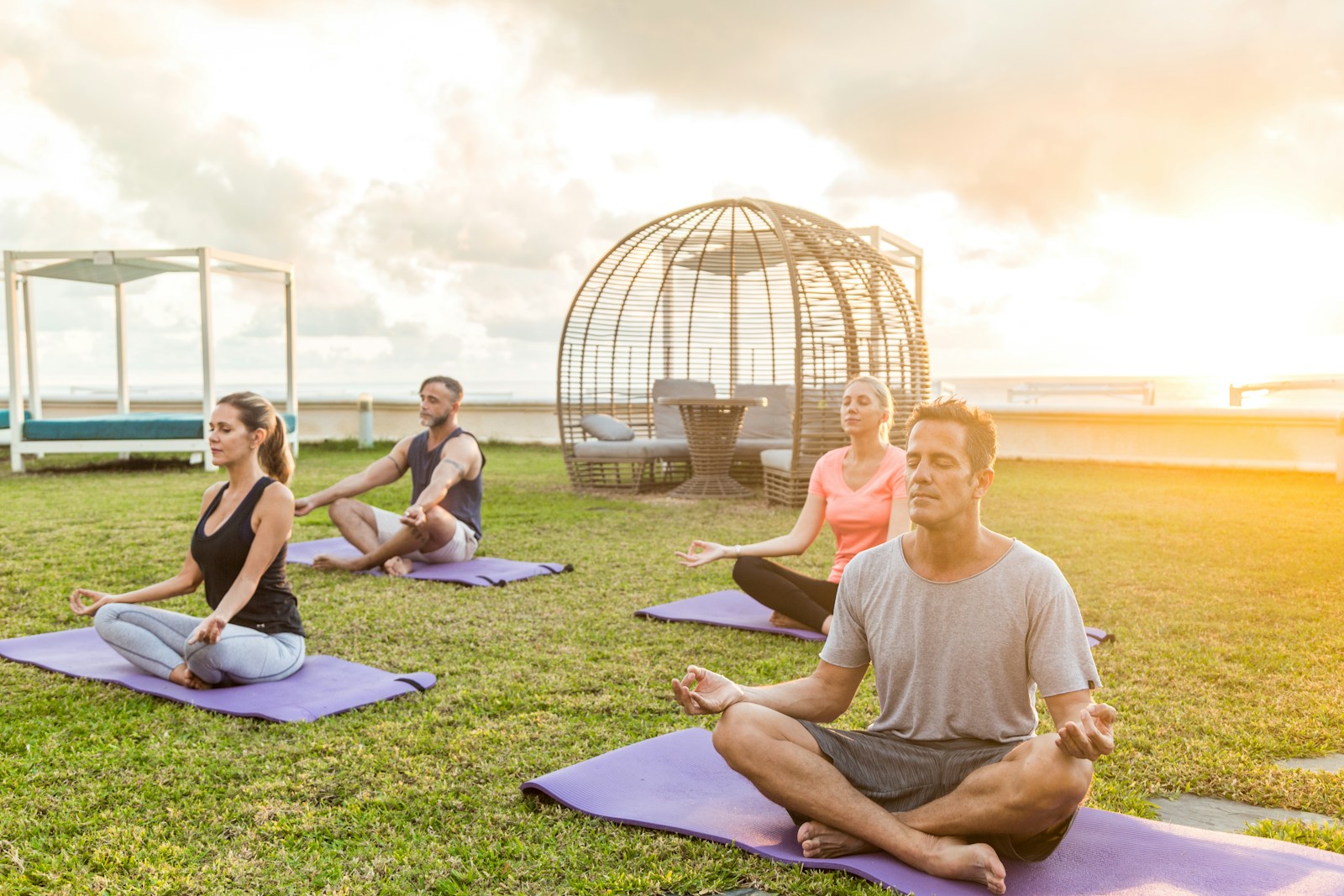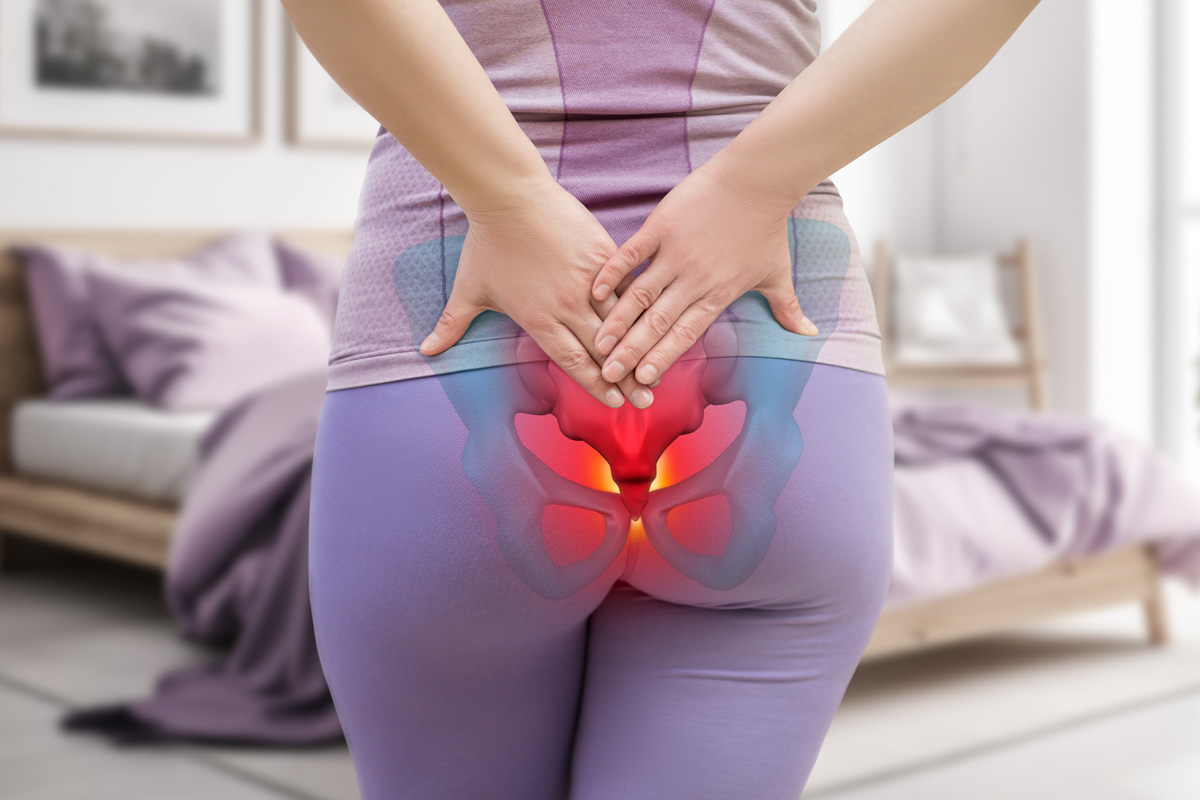Buttock muscle pain, a common discomfort experienced by many, can be addressed through a multi-faceted approach that encompasses physical exercises, lifestyle modifications, and professional treatments. From initiating targeted stretching routines and strengthening exercises to making necessary adjustments in daily habits, the journey to relief may be more nuanced than one might initially anticipate. What roles do proper posture and hydration play in this process? How can professional interventions contribute to alleviating this pain? These are just a few of the thought-provoking questions we will explore further.
Understanding Buttock Muscle Pain
Grasping the concept of buttock muscle pain involves understanding its various causes, symptoms, and potential treatments. This type of pain, often underdiagnosed, can have a substantial impact on an individual’s daily activities. Pain origins may vary and are typically associated with a number of factors including muscle strain, nerve impingement, or a more serious underlying condition such as sciatica or piriformis syndrome.
Key to diagnosing buttock muscle pain is the identification of trigger points. These are sensitive spots in the muscle or fascia (the connective tissue surrounding muscles) that cause pain when compressed. Trigger points can be caused by factors like poor ergonomics, repetitive movements, or stress. Additionally, they can refer pain to other areas, leading to discomfort not only in the buttock, but also potentially in the lower back or legs.
Treatment for buttock muscle pain is typically multifaceted, involving physical therapy, medication, and sometimes surgery. It’s vital to accurately diagnose the cause of pain to ensure appropriate treatment. A healthcare professional may use a combination of physical examination, patient history, and diagnostic imaging to identify the cause of pain and devise an effective treatment plan.
The Role of Proper Posture
In the context of alleviating buttock muscle pain, maintaining proper posture plays a pivotal role as it helps reduce undue strain on the affected muscles, thereby promoting healing and preventing future discomfort. Besides practicing good posture, using posture correction devices can greatly help in improving your stance, alignment, and overall postural habits. These devices, such as back braces and posture correctors, provide the necessary support to your spine and lower back, ensuring your muscles are not overworked or strained.
Ergonomic furniture benefits cannot be overstated in the journey towards maintaining proper posture and easing buttock muscle pain. Ergonomic chairs and desks, for instance, are designed with the natural curvature of the spine in mind. They provide the needed support and comfort, thereby minimizing the risk of developing pain due to prolonged sitting or standing. They also help in the proper alignment of your body, promoting the best positioning of your lower back, buttocks, and legs.
Essential Stretching Techniques
A variety of specific stretching techniques hold the potential to provide significant relief from buttock muscle pain by enhancing flexibility, improving blood circulation, and reducing muscle tension.
One stretching technique that is particularly beneficial is the ‘Piriformis Stretch’. This stretch targets the piriformis muscles, which if tight, can contribute to buttock pain. To perform this stretch, lie on your back and gently pull your knee towards your opposite shoulder. Hold for 30 seconds and repeat on the other side.
The ‘Hamstring Stretch’ is another essential technique. Tight hamstrings can cause buttock pain due to the interconnected nature of the muscles in your lower body. To perform this stretch, sit on the floor with one leg extended and the other bent, reach forward towards your foot, and hold the stretch for about 30 seconds.
‘Sports injuries prevention‘ is another key consideration. Regular stretching can help to prevent injuries, by improving flexibility and reducing muscle tightness.
Lastly, ‘Deep tissue massage’ can complement these stretches. By focusing on the deeper layers of muscle tissue, this type of massage can help to release chronic muscle tension, further aiding in the relief of buttock pain. It is recommended to seek a qualified practitioner for this technique.
Strengthening Exercises for Relief
Strengthening exercises can markedly contribute to alleviating buttock muscle pain and preventing future strains. Our focus will now shift to discussing specific workouts that target the gluteal muscles, providing effective relief from discomfort. Additionally, we will explore how these exercises can help prevent recurrences of muscle strains.
Glute Strengthening Workouts
Numerous exercises can be employed to fortify your glute muscles, and as a result, offer relief from buttock muscle pain. Glute activation techniques are an essential component of these workouts. These methods focus on engaging your glutes during exercise, enhancing muscle strength and flexibility. Techniques can range from isolated exercises, like glute bridges, to incorporating more glute work in compound movements, such as squats or lunges.
Additionally, foam rolling offers considerable benefits for glute strengthening and pain relief. This self-myofascial release technique helps in muscle relaxation, increases blood flow, and improves mobility. Regular foam rolling after workouts can alleviate muscle tightness, which often contributes to buttock muscle pain. As a result, a combination of glute activation and foam rolling can be a powerful strategy in managing this type of discomfort.
Effective Pain Relief Exercises
While many exercises can potentially alleviate buttock muscle pain, several targeted strengthening routines are particularly effective in providing relief. These exercises focus on enhancing the flexibility and endurance of the glute muscles, consequently reducing discomfort.
One recommended routine is the ‘Bridge Exercise,’ which can be performed with or without weights. It primarily targets the glutes and lower back muscles. Additionally, the ‘Clamshell Exercise’ is another effective method that aims to strengthen the hip muscles, offering secondary benefits to the glute region.
In addition to these exercises, incorporating alternative therapies like acupuncture and massage therapy can also provide relief. Acupuncture benefits include improved blood circulation and muscle relaxation. Massage therapy, on the other hand, helps to alleviate muscle tension and promotes faster recovery.
Preventing Future Muscle Strain
To lessen the risk of recurrent buttock muscle strain, it is essential to regularly engage in specific strengthening exercises designed to enhance muscle resilience and endurance. Here are four important steps to help prevent future strains:
- Muscle Strengthening: Incorporate routines that particularly target the gluteal muscles. This can provide increased support and decrease the risk of re-injury.
- Muscle Relaxants Usage: Consult with a healthcare provider about the potential benefits of muscle relaxants. These medications can help reduce muscle spasms and pain.
- Heat Therapy Application: Regular use of heat can promote muscle relaxation and healing by increasing blood flow to the affected area.
- Stretch Regularly: Maintaining flexibility through daily stretching exercises can greatly reduce the risk of muscle strains.
Role of Hydration in Muscle Health
Understanding the essential link between hydration and muscle health can provide significant relief from buttock muscle pain. Hydration plays an important role in the overall health and functionality of muscles. It is instrumental in maintaining muscle elasticity, strength, and coordination, all of which are necessary for preventing and alleviating muscle pain.
Hydration’s impact on muscle recovery is particularly significant. By ensuring proper hydration, one facilitates the efficient transportation of oxygen and nutrients to muscle cells, which aids in their repair and regeneration. This process is crucial for relieving muscle pain and promoting recovery after a strenuous activity or injury.
Water intake recommendations vary depending on individual needs, activity levels, and environmental conditions. However, a common guideline suggests drinking at least 2 liters (or 8 cups) of water per day. For those engaging in high-intensity exercises or living in hot climates, the requirement might be higher.
Over-the-Counter Pain Relief Options
For those suffering from buttock muscle pain, numerous over-the-counter options can offer effective relief. These options are typically non-invasive and can be used at your own discretion, providing a convenient method to manage discomfort.
Here are four common over-the-counter remedies:
- Analgesic creams usage: These topical treatments often contain ingredients like menthol or capsaicin, which can numb the skin temporarily and provide a cooling sensation that helps to relieve pain.
- Heat therapy benefits: Heat pads or hot water bottles can be applied to the painful area to increase blood flow and help muscles relax. This method can be particularly effective for chronic or long-lasting pain.
- Non-prescription anti-inflammatory drugs: Over-the-counter medications such as Ibuprofen can help to reduce inflammation and pain. However, these should not be used long term without consulting a healthcare professional.
- Pain relief patches: These are adhesive patches that can be applied to the skin for localized pain relief. They release medication over time, providing long-lasting relief.
Importance of Regular Movement
In managing buttock muscle pain, incorporating regular movement into your daily routine plays a vital role, as it promotes muscle flexibility and reduces stiffness. The dangers of a sedentary lifestyle are well-documented, with prolonged inactivity contributing to the development of chronic pain conditions, including buttock muscle discomfort. Regular movement, on the other hand, enhances blood circulation, leading to better nutrient supply and waste removal in the muscle tissues. This, in turn, aids in pain relief and recovery.
The benefits of movement frequency are not only physical but also psychological. Regular mobility activates the release of endorphins, the body’s natural painkillers, thereby lowering pain perception. It also fosters a positive mood, which can help in managing the psychological aspects of chronic pain.
Executing a variety of movements, such as standing, walking, or simple stretching exercises, can maintain muscle elasticity and prevent the onset of stiffness, a common cause of buttock muscle pain. However, it is important to perform these movements correctly to avoid further strain.
Professional Physical Therapy Treatments
Harnessing the expertise of a trained physical therapist can greatly alleviate buttock muscle pain through targeted, evidence-based treatments. This process involves a bespoke approach, designed to address your unique pain points and improve your overall well-being.
Here are four key treatments often used by physical therapists:
- Manual Manipulation: This involves the use of hands-on techniques to relieve pain, improve mobility, and restore function. It can include joint mobilization, soft tissue mobilization, and muscle stretching.
- Therapeutic Massages: Skilled therapists use specific massage techniques to relieve tension, improve blood circulation, and facilitate healing in the buttock muscles.
- Ultrasound Therapy: This involves using sound waves to produce heat within the body tissues, promoting healing and reducing muscle stiffness and pain.
- Electrotherapy: Techniques such as Transcutaneous Electrical Nerve Stimulation (TENS) are often used to stimulate the nerves in the affected area, reducing pain and promoting muscle relaxation.

Incorporating Yoga Into Routine
Aside from professional treatments, integrating yoga into your daily routine can greatly enhance flexibility, alleviate muscle tension, and aid in the management of buttock muscle pain. This age-old discipline combines physical postures, breathing exercises, and meditation, all of which are known for their numerous health benefits.
One of the key yoga benefits is its ability to improve flexibility and strength, which can help relieve muscle tension and discomfort. Certain yoga styles, such as Hatha and Iyengar, focus on alignment and slow, controlled movements, making them ideal for beginners and individuals with muscle pain. Other styles, like Ashtanga and Vinyasa, are more vigorous and can help build strength over time.
Additionally, yoga helps improve blood circulation, ensuring that your muscles receive adequate nutrients for healing and recovery. It also promotes mindfulness, encouraging you to be present and aware of your body, which could help you identify and address the source of your pain.
Lifestyle Changes for Long-term Relief
For long-term relief from buttock muscle pain, certain lifestyle modifications can be highly effective. These include adopting a regular exercise regime, consuming a balanced diet, and maintaining good posture. In the following discussion, we will explore each of these points in detail to understand their benefits and practical implementation.
Regular Exercise Regime
Implementing a regular exercise regime is a proven approach to alleviate buttock muscle pain and guarantee long-term relief. This regime should combine both cardio and strength training exercises, utilizing the correct exercise equipment to target the gluteal muscles in particular.
- Workout Duration: Start with 15 to 20 minutes of low-impact cardio such as walking or cycling, gradually increasing as your fitness improves. This warms up the muscles and prepares them for strength training.
- Strength Training: Include exercises such as squats, lunges, and glute bridges in your routine.
- Exercise Equipment: Use resistance bands or weights to add intensity and effectiveness to your workouts.
- Consistency: Make sure to exercise at least 3 to 4 times a week for best results. Regularity is key to reducing and preventing buttock muscle pain.
Balanced Diet Benefits
While regular exercise plays a significant role in mitigating buttock muscle pain, maintaining a well-balanced diet is another essential aspect of lifestyle modifications for long-term relief. A balanced diet provides the necessary nutrients required for best muscle function and recovery, reducing inflammation and promoting muscle relaxation. Nutritional deficiencies can exacerbate muscle pain and affect healing. Ensuring adequate intake of essential vitamins, minerals, and proteins is essential. Where necessary, dietary supplements may be recommended to meet nutritional gaps. Omega-3 fatty acids, magnesium, and vitamin D, for instance, are known to enhance muscle health and can be beneficial in managing buttock muscle pain. Always consult with a healthcare professional before starting any dietary supplement regimen for the best personalized advice.
Importance of Good Posture
Adopting good posture, an often overlooked aspect of daily living, plays a pivotal role in alleviating buttock muscle pain and promoting overall musculoskeletal health. It’s important to understand the impact of your daily habits on your posture and subsequently, your wellbeing.
- Posture Analysis: Regular posture analysis helps identify deviations and imbalances that may contribute to muscle pain.
- Ergonomic Furniture: Use ergonomic furniture that supports the natural curve of your spine. Chairs with adequate lumbar support can prevent muscle strain.
- Practice Mindfulness: Be mindful of your posture throughout the day, especially during prolonged sitting or standing.
- Regular Exercise: Regular physical activity strengthens muscles and promotes good posture, reducing the risk of pain.
When to Consult a Doctor
Despite diligent self-care and exercise, you should seek medical consultation if your buttock muscle pain persists, intensifies, or is accompanied by other worrying symptoms. Persistent or escalating pain can indicate an underlying condition that requires professional medical intervention. Further, if your pain is not alleviated by over-the-counter medication, or you experience pain medication side effects, such as stomach upset, dizziness, or issues with sleep, it’s important to discuss these symptoms with your doctor.
Your doctor can make an accurate diagnosis and recommend treatment options that suit your condition. These may include prescription medications, physical therapy, or even surgical intervention possibilities if necessary. For instance, if the pain is linked to nerve compression or a herniated disc, a surgical procedure might be considered to relieve pressure on the affected nerve.
Moreover, seek immediate medical attention if your buttock pain is accompanied by symptoms such as loss of bowel or bladder control, numbness or weakness in your legs, or severe abdominal pain. These could signal severe conditions like cauda equina syndrome or aortic aneurysm that need urgent medical care. Always remember, it’s better to consult early than to suffer in silence.
Frequently Asked Questions
Can Certain Foods or Diet Contribute to Buttock Muscle Pain Relief?
Yes, certain foods can contribute to muscle pain relief. Hydration impact is significant, drinking ample water can help reduce muscle soreness. Including anti-inflammatory foods such as berries, fatty fish, and green leafy vegetables can also aid relief.
Are There Specific Shoes Recommended to Help Alleviate Buttock Muscle Pain?
Shoes designed for posture correction can indirectly alleviate buttock muscle pain by promoting proper alignment. Moreover, footwear with appropriate cushioning can minimize exercise impact, reducing strain on muscles including those in the buttock region.
Does the Application of Heat or Cold Help in Relieving Buttock Muscle Pain?
Yes, both heat and cold therapies can be effective. Heat therapy benefits include increased blood flow and muscle relaxation, while cold therapy can reduce inflammation and numb the area, providing pain relief.
How Does Stress Impact Buttock Muscle Pain and Are There Stress-Relieving Techniques?
Stress can exacerbate muscle pain, including in the buttocks, by causing tension and inflammation. Adopting stress management techniques like deep breathing and muscle relaxation methods such as yoga can potentially alleviate this discomfort.
Can Certain Sleeping Positions Help or Worsen Buttock Muscle Pain?
Yes, certain sleeping positions can influence buttock muscle pain. Pillow placement under the knees or between the legs can promote spinal alignment, reducing pressure. Regular exercise also aids in muscle relaxation and pain relief.


